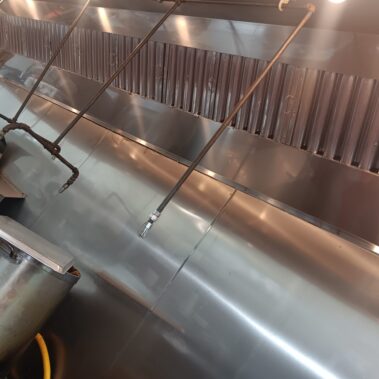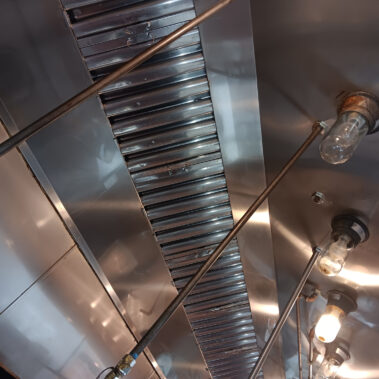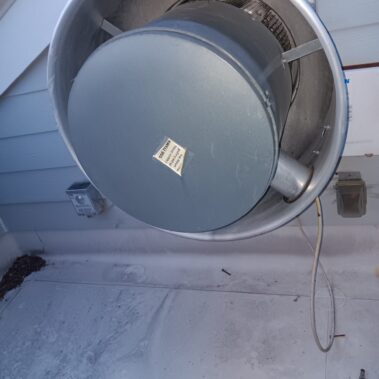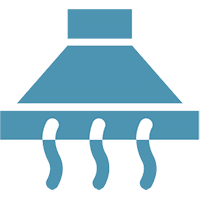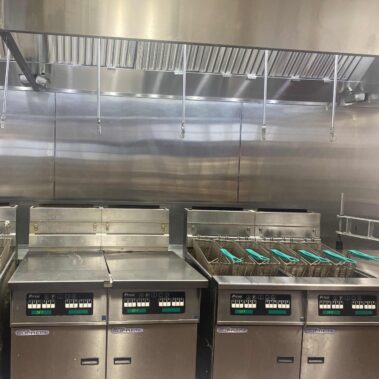
- PROTECTING THE KITCHEN: AHDS takes every precaution to make sure all grease/wastewater is contained.
- All filters are removed, thoroughly cleaned, and replaced.
- Ansul Systems are cleaned, allowing them to function properly in case of a fire.
- Hood systems are designed to direct excess grease into an area designed for a grease trap. Hood grease traps allow excess grease to go in the trap instead of running down the wall requiring additional cleaning and maintenance.
- Hinges enable safe access to the inside of the fan for cleaning, inspection, and repair. They allow the fan’s electrical components to stay stationary for continued safe operation. Fans not equipped with hinges have to be picked up off the duct and laid down on their side for cleaning, which causes extreme wear & tear on all parts of the fan especially to the electrical components.
- Properly working hinge kits greatly reduce damage to the fan and require only one technician, producing a quicker and more efficient cleaning.
- Once the inside of the fan is completely cleaned it’s placed back on the duct and thoroughly cleaned on the outside too.
- The roof is then thoroughly cleaned around the fan whereas the technician inspects and notates the condition of the fan’s electrical cable and whether hinges and/or grease traps are present and working properly for your maintenance inspection report.
- Grease traps enable any overflow to go into the trap instead of on the roof where it can cause subsequent damage over time. A weatherized, flexible electrical cable for the fan is required in order to safely open the fan for cleaning, inspection, and repair.
- Stainless steel hoods are completely polished with an anti-rust protectant, guarding against buildup and rust.
- A label of record is placed on the hood indicating the date of your most recent cleaning and the date the next service is due
- Work areas are carefully cleaned and the floors scrubbed and mopped, leaving it cleaner than when we arrived.



